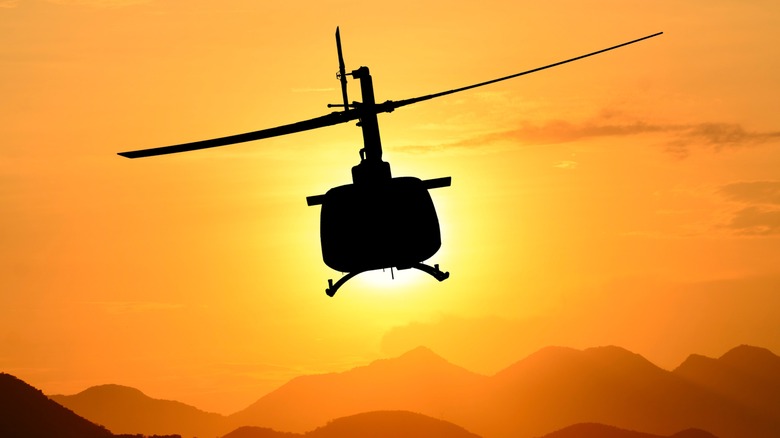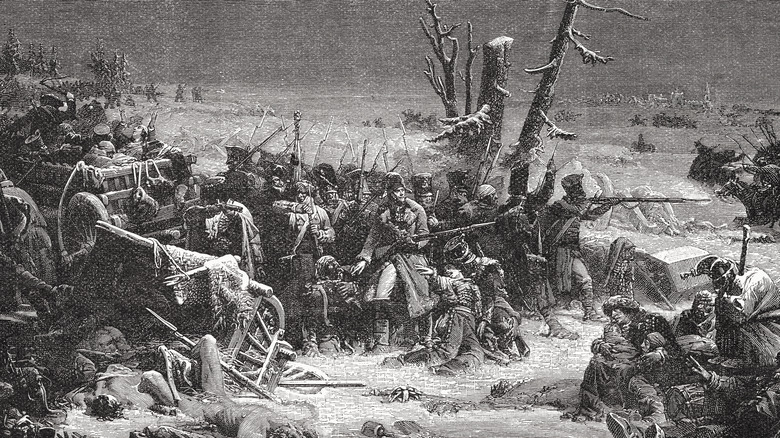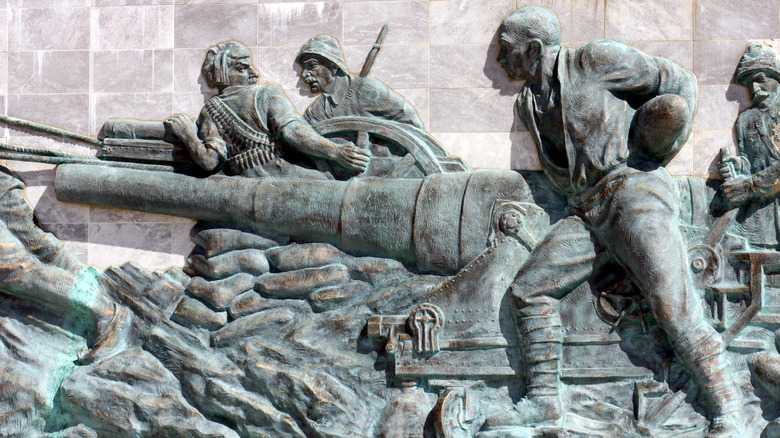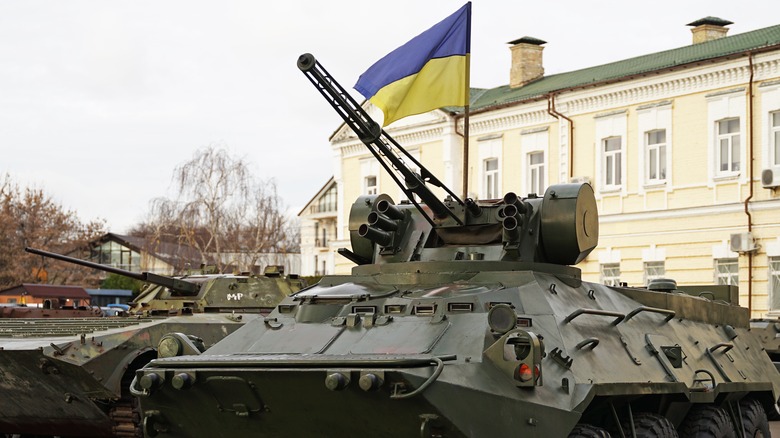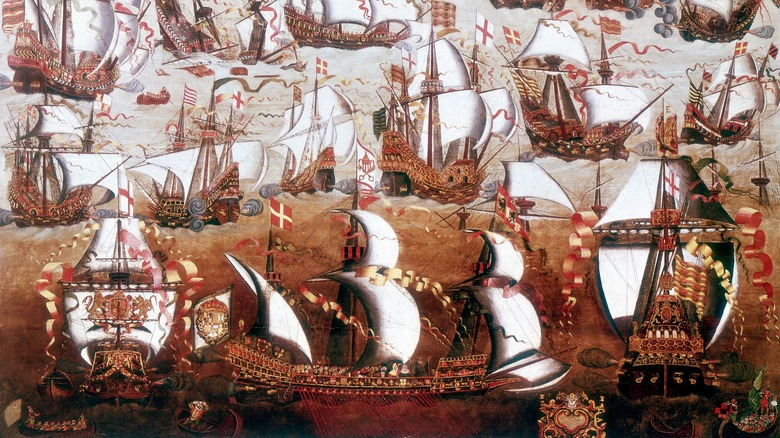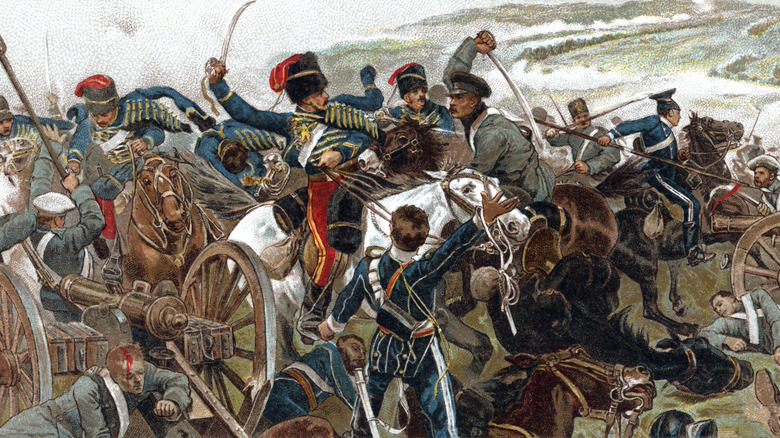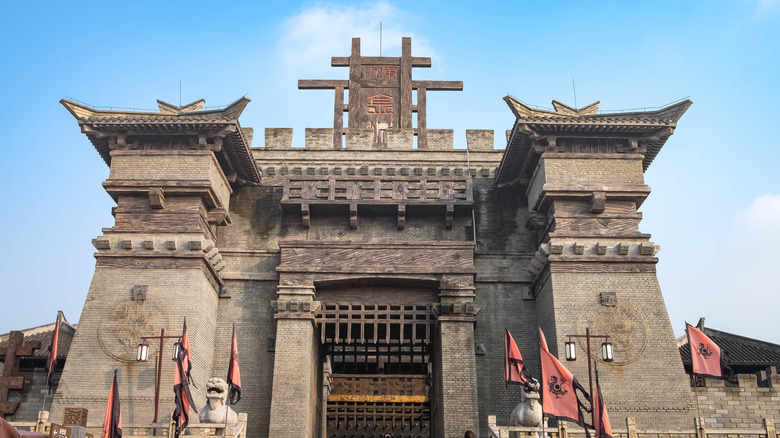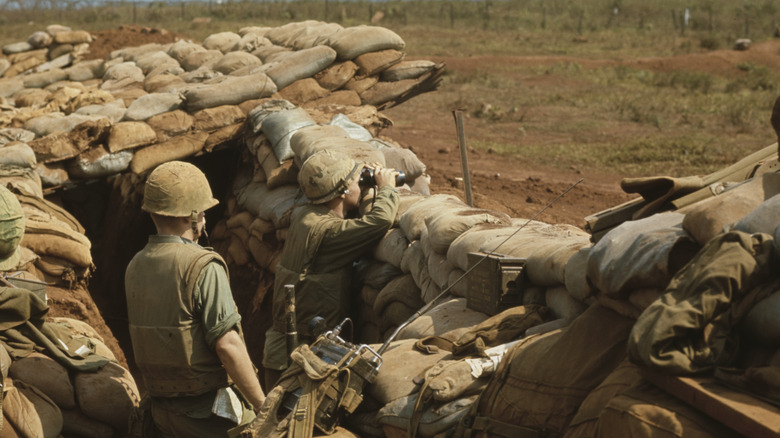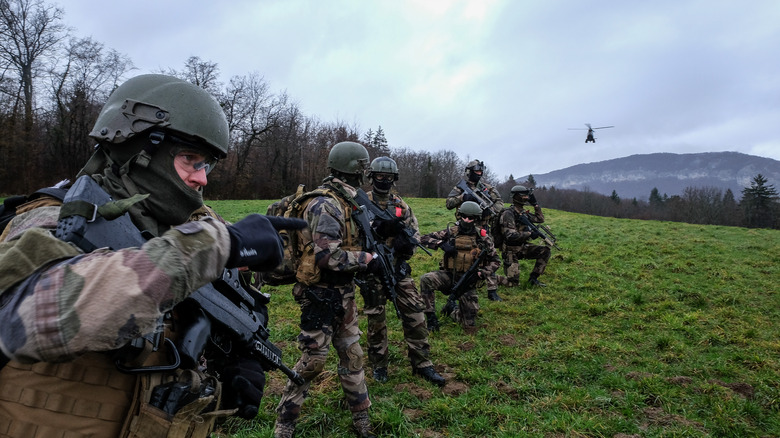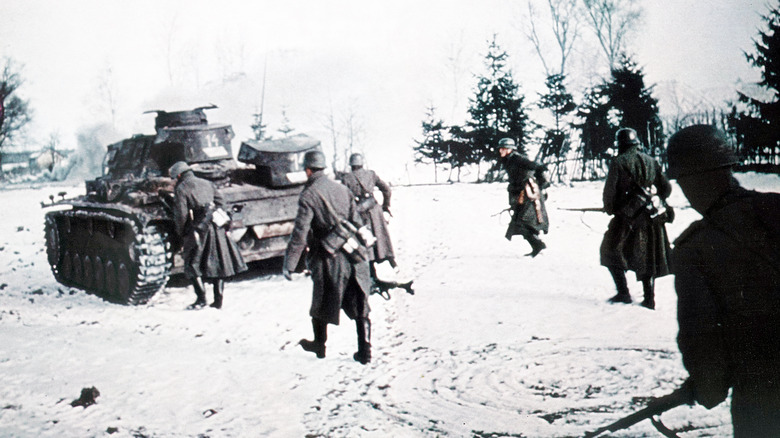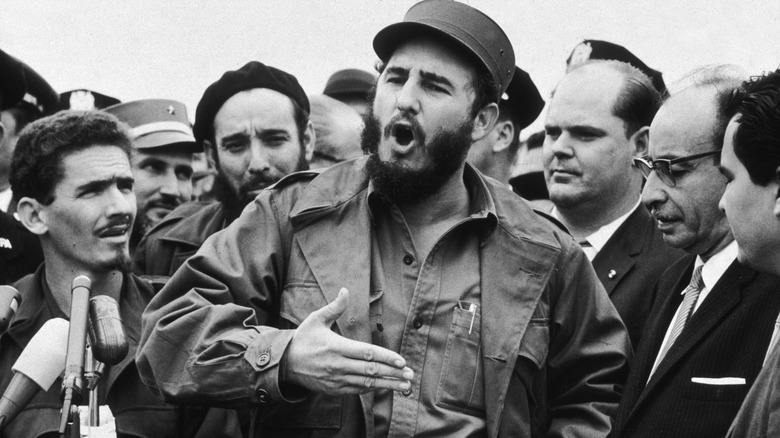10 Military Operations That Failed Miserably
Throughout human history, there has always been conflict and warfare. As nations developed, so did armies and navies, allowing leaders to launch attacks or defend their land from invaders. Any conflict has winners and losers, with most battles either ending in defeat, victory, or even stalemate. While many people will be aware of famous triumphs where militaries won against the odds, spectacular defeats are often not quite as well known.
Military operations can be in response to any number of events. A country may wish to invade another nation, launch a counterinsurgency mission, or even support an ally. Of course, not all of them are successful and many can actually be disasters for those involved. Whether it's a bad decision from political leaders or strategical errors from the commanders on the ground, when military operations fail they can do so in spectacular fashion.
Here, we are going to examine military operations from modern and ancient history that not only failed but led to total defeat and humiliation.
Napoleon's invasion of Russia
Napoleon Bonaparte is one of the most famous men in history. He came to prominence for his actions during the French Revolution — where he was an important figure — and his role in the French Revolutionary Wars against significant European powers. By 1804, he had risen to the rank of Emperor of the French and established himself as a major figure in world history. Known as a skilled strategist and battle commander, Napoleon was behind several decisive victories in the 19th century.
However, that doesn't mean that every campaign he embarked upon was successful. While many people will know of the Battle of Waterloo, where Napoleon was finally defeated, he had what was possibly an even more disastrous military operation three years earlier. Amid worsening tensions between France and Russia, Napoleon sought a way to force the country back into his controversial Continental System to blockade the United Kingdom.
The campaign began on 24 June 1812 and Napoleon initially saw a lot of success. Crossing into Russia with 600,000 men, the various battles were bloody, with an estimated 1 million casualties on both sides. With Russian forces continuing to retreat and not allowing Napoleon the chance to strike a decisive victory, he was forced to leave after bad weather and a lack of supplies further depleted his forces. Meanwhile, many soldiers from other countries who had been made to fight deserted when victory seemed unlikely. Fewer than 100,000 troops in the French army survived the journey back home.
The Gallipoli Campaign
Gallipoli, which is now known as Gelibolu, is an area of Turkey that was the subject of a massive military operation during the First World War. Beginning on 19 February 1915, the campaign officially lasted almost 11 months until its conclusion in January of the following year. Planned by the Entente forces of Great Britain, France, and Russia, the aim was to take control of Constantinople, significantly impacting the strength of the Ottoman Empire and opening up a sea route to Russia.
The campaign began with a naval assault at the Dardanelles, which failed to make any significant breakthrough against the Ottoman forces and led to a huge number of ships being either sunk or partially destroyed. This prompted the Entente forces to launch an amphibious landing to begin a ground war at different points of the Gallipoli coast, despite earlier reports indicating this would be a costly and difficult operation. Part of the problem is that the Entente commander underestimated just how capable the Turkish troops were and how ferociously they were willing to defend their homeland.
After months of making little progress and losing hundreds of thousands of men, the Entente armies in Gallipoli hastily retreated. A combination of consistently losing the initiative and terrible conditions — which led to disease and a lack of useable supplies — ensured the Entente forces made no gains. At the very least, their retreat went off without a hitch and allowed tens of thousands of men to safely escape.
Russia's invasion of Ukraine
Repeatedly called a special military operation by Russia's President Vladimir Putin, the initial Russian invasion of Ukraine was a spectacular failure. Relations between the two countries had been strained for some time before the attack, with Russia annexing Crimea in 2014 and supporting insurgents in eastern Ukraine. In the lead-up to the invasion on 24 February 2022, Russia had amassed huge numbers of troops and military equipment across the border between the two countries.
Invading from three fronts, including a northern attack from Belarus, the Russian army attempted to quickly advance on the capital Kyiv and put an end to hostilities before they had even started. Things went wrong almost immediately, though, with a huge convoy of vehicles stretching some 35 miles bogged down outside of the city. Factors such as vehicles being equipped with the wrong tires and commanders being unprepared for the winter weather forced the battalions to advance in a single line on paved roads — a severe blunder that made them easy targets.
The convoy was soon forced to retreat, leaving Russian forces in the south and east of the country to slowly move forward. Facing stiff resistance from local residents and Ukraine's own military, Russia made a slow advance and has been pushed back in recent months. Most analysts agree that Putin overestimated his own military capabilities while underestimating Ukraine's strength and the united response from NATO and EU nations, which have provided Abrahms tanks and other munitions.
The Spanish Armada
The Spanish Armada was a huge fleet of Spanish ships that was intended to take control of the English Channel and allow an invasion force to overthrow the crown and take control of England. It was part of the wider Anglo-Spanish War, which had begun due to rising tensions between the two countries as a result of a shift in politics and religion in England. King Philip II was determined to stop the spread of Protestantism and reinstate Catholicism in the country, while Queen Elizabeth I supported Dutch rebels in the Netherlands, which were at the time under Spanish rule.
The fleet set sail from Lisbon in May of 1588 and was composed of dozens of galleons, merchant ships, and other boats, with a total number reaching around 130 vessels. When it arrived at the English coast, a force of around 100 English ships met it under the command of Charles Howard and Francis Drake. Several sea battles ended in stalemates over the next few weeks until the Spanish fleet anchored near Calais.
It was here that disaster struck for Spain and its military. Howard and Drake launched a surprise attack, setting empty ships on fire and sailing them into the armada. Panic spread and the ships scattered, allowing the English to attack and deal a strong blow against their enemy. However, the real defeat came when strong storms battered the Spanish ships and forced them into the North Sea. Faced with rising disease and increasing damage due to the ravaging weather, the Spanish retreated with a loss of almost half their ships and men.
The Charge of the Light Brigade
The Charge of the Light Brigade was an attack by the British light cavalry against Russian artillery during the Battle of Balaclava. It took place on 25 October 1854 and was part of the wider Crimean War between the United Kingdom and France against the Russian Empire. With the Russian guns having a clear line of sight and support from flanking artillery, they were able to cause mass casualties against the British cavalry, who were forced to almost immediately retreat after engaging the Russian troops.
The reason that Lord Cardigan mounted this doomed frontal assault was due to a miscommunication during the battle. The overall commander of British forces was Field Marshal Lord Raglan. During the battle, he had noticed Russian troops seizing several of his army's naval guns so he sent a message to the light cavalry to attack them and regain the weapons. When Cardigan received the command, he was not sure which guns the Field Marshal was referring to and the messenger delivering the order mistakenly indicated towards the main Russian artillery.
With hundreds killed and wounded, the light cavalry was almost completely destroyed. In fact, the survivors only managed to escape thanks to the intervention of a French cavalry unit that was able to attack one of the flanking Russian units. The blame was put on imprecise orders and an unwillingness to properly question commands.
The Battle of Red Cliffs
Sometimes known by the alternative name the Battle of Chibi, the Battle of Red Cliffs was a conflict that took place at the end of AD 208 and the start of AD 209. With the Han dynasty having no real power, control of China shifted to regional warlords and the battle took place between an allied group of southern chiefs — Sun Quan, Liu Bei, and Liu Qi — against Cao Cao, who hailed from the north. With Cao Cao attempting to conquer the lands south of the Yangtze River with massive naval force, the allied forces mounted a defense at Red Cliffs.
The southern forces were outnumbered during the battle but managed to inflict heavy losses on their enemy thanks to the fact that they were better experienced in naval warfare. Meanwhile, Cao Cao's forces were not familiar with this area of China and were weary from a series of earlier conflicts. These factors contributed to the northern troops suffering from seasickness, leading Cao Cao to lash together his vessels to make them more stable.
The opposing forces took advantage of this, using their increased maneuverability compared to the enemy ships that were now chained together and cumbersome. They also created several fire ships and set them towards Cao Cao's fleet, which was unable to escape due to the fact they were now all stuck together. The close proximity also allowed the flames to spread more quickly. Suffering heavy losses, Cao Cao was forced to retreat and his conquest of the south was abandoned.
The Vietnam War
The Vietnam War is probably one of the most famous military failures in modern history. Beginning on 1 November 1955, it lasted until 30 April 1975 with the fall of Saigon. Seeking to halt the spread of communism while weakening China and the Soviet Union, the United States supported South Vietnam in its civil war against North Vietnam. Initially, the U.S. provided financial and military support in the form of advisors and training but by 1964, the number of American troops arriving in Vietnam began to increase.
The war was largely fought between U.S. troops and the Army of the Republic of Vietnam against the People's Army of Vietnam and its guerilla warfare wing the Viet Cong. The U.S. had limited success despite increasing the number of troops and military spending in Vietnam, with the war formerly ending with the withdrawal of the U.S. coalition's forces and the communist government taking over the whole country.
There were a number of important factors that contributed to the U.S. failure in Vietnam. Military commanders failed to adapt to the guerilla warfare used by the Viet Cong, while the advanced aircraft of the U.S. Air Force undertook brutal bombing campaigns that turned the local populace against them. The cost of the war was huge, with America spending roughly $170 billion and suffering more than 200,000 American soldiers killed or wounded — all without any appreciable gain.
Operation Barkhane
Operation Barkhane is one of the more recent military failures, having begun on 1 August 2014 and only officially concluding on 9 November 2022. Taking place in several African nations — including Mali, Niger, and Burkina Faso — it saw French military forces fighting against Islamist groups in a counterinsurgency mission. Over 5,000 French troops were deployed in Mali before coalition forces departed as a result of a change of government in the country that has led to a breakdown in the relationship between France and Mali's military junta.
The main aim of Operation Barkhane was to support the countries of the Sahel region in central Africa and prevent it from becoming a safe haven for jihadist extremists such as Al-Qaeda and the Islamic State. French special forces and other units carried out raids on Islamist compounds and found some limited success, killing major commanders and preventing further terror attacks in the region.
However, terrorism increased in the region just a few years later, with violence and killings rising rapidly. New groups, such as the Macina Liberation Front and the Islamic State of the Greater Sahara rose in Sahel, with the opinion of French forces in the region dramatically falling. Several coups have taken place in countries in the area, while Russia's Wagner group has grown in influence as a security force. Ultimately, Operation Burkhane failed to achieve its basic objectives and has left the region even more volatile.
Operation Barbarossa
Operation Barbarossa was the codename for Hitler's invasion of the Soviet Union, which was a surprise development considering that he had signed a non-aggression pact with the country just two years earlier. Starting on 22 June 1941, it saw millions of troops march into what is now Russia as part of Germany's offensive during World War II. It was a brutal campaign that saw German forces capture millions of Soviet troops and civilians before subjecting them to terrible conditions.
Wanting to expand eastward following the fall of France, Hitler began his invasion of the Soviet Union with the intention of replicating the tank blitzkrieg strategy that had proved so successful in Western Europe during the early parts of World War II. The plan worked initially, with German forces making impressive headway into the Soviet Union, but this progress slowed as Soviet forces dug in and put up stiff resistance.
The operation ultimately failed after several months, with the cold winter weather preventing the German army from moving towards Moscow. Without adequate supply lines or any long-term plan, Germany was ill-prepared for a drawn-out conflict in enemy territory and suffered tremendous losses. The failure had severe consequences for Hitler as well, planting the early seeds for Nazi Germany's later defeat.
The Bay of Pigs Invasion
Taking place over three days after beginning on 17 April 1961, the Bay of Pigs Invasion was an attempt by exiled Cuban paramilitaries to overthrow Fidel Castro's revolutionary government. With the support of the U.S. government and the CIA, the Cuban Democratic Revolutionary Front led the attack. Throughout the planning stages, American officials worked with the Cuban Democratic Revolutionary Front and its military wing, Brigade 2506, to provide secret military and financial support. This included sending several B-26 bombers to attack Cuban targets days before the invasion began.
Roughly 1,400 troops landed at Playa Girón and quickly overpowered a local militia group stationed nearby. However, things went wrong almost immediately for the invading troops. Coral -– which the CIA believed was seaweed -– hampered the landing and damaged equipment, while flares used to indicate safe landing spots removed all secrecy and exposed the troops. Local residents quickly alerted Cuban authorities, allowing the Cuban army to respond sooner than the attackers believed possible. Yet, the most important factor in the failure was the withdrawal of air support by the U.S. at the order of President John F. Kennedy.
The U.S. had intended to keep their involvement in the operation hidden. When news of the invasion broke before the Cuban Democratic Revolutionary Front could gain headway or install an exiled government, Kennedy was unwilling to further implicate himself and the country in the attack. The attacking troops were left vulnerable and defeated in just three days. Many were killed and hundreds more captured, with the invasion also pushing Cuba closer to the Soviet Union and strengthening Castro's revolution.
